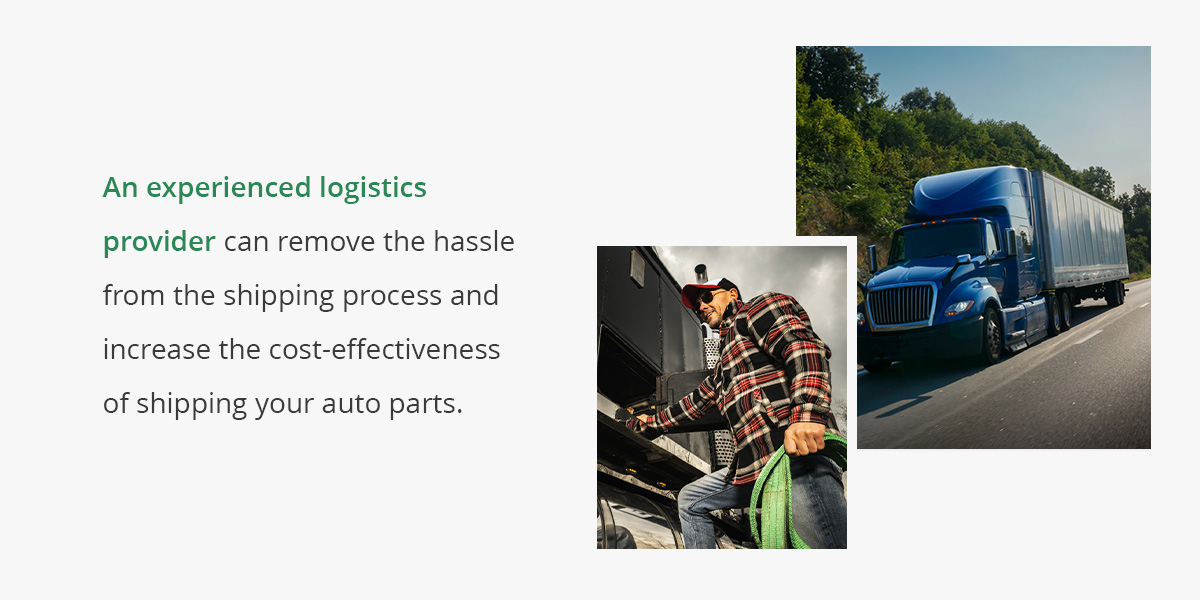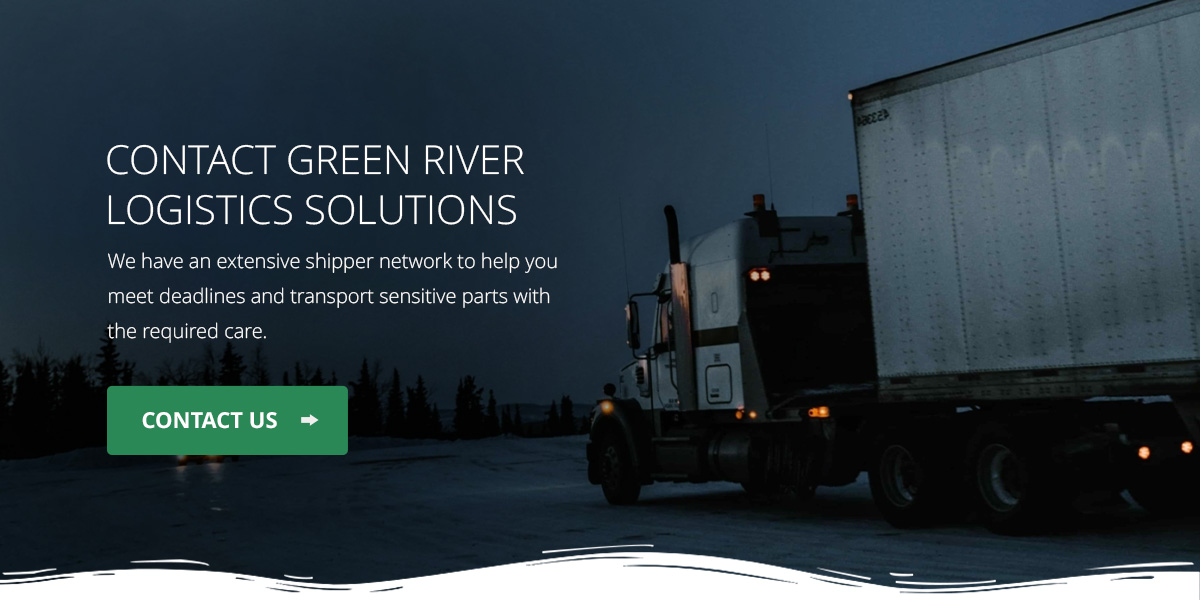How to Ship Auto Parts
Packing auto parts correctly is essential to prevent damage and additional replacement costs. During shipments, products pass through many hands, requiring adequate protection from shock, vibration and other hazards.
Read on for a guide on shipping auto parts, from preparing them to finding a reliable shipping partner.
3 Steps for Auto Parts Shipping
Three main stages are involved in shipping auto parts. Here are the factors typically involved in each of these phases.
1. Preparation
Businesses in the automotive industry must thoughtfully prepare parts for shipment to set themselves up for success. Taking a few preventative actions can improve customer satisfaction by ensuring timely delivery and excellent product condition. It helps combat penalties that can affect the business’s reputation.
Here are three critical factors to consider when preparing auto parts for shipping:
- Product weight: It’s essential to factor in your product’s weight. Companies can optimize the packaging of lighter items to lower carbon dioxide emissions and cut shipping costs. Heavier items require highly durable packaging and specialized designs to prevent damage during transit.
- Product vulnerability: If you’re shipping fragile auto parts, you may need specialized packaging with cushioning or protective inserts. When considering the packaging, companies should also examine the product’s finishes. Often, auto part surfaces can be decorative, polished or painted and are prone to scratches and scrapes during transit, so adequate packaging is vital.
- Product value: Auto parts come in various price ranges — some may be cheaper, like ancillaries or trims, while others, like gearboxes, can be expensive. More valuable items would require highly protective packaging and choosing a shipping company with risk management and supply chain visibility.
Businesses must consider how their items may be handled during each supply chain step and what the end product should look like.
Think about the environments your products will be exposed to during transit and the protection they need.
Consider your packaging’s impact on the environment. Are you using excess materials that could affect transport efficiency? Are you designing your boxes to optimize space and reduce waste?
Determine whether single-trip packaging is more convenient for the client. For aftermarket models, extendable or returnable packaging may be a more convenient option.
2. Packing
Having a checklist covering the most critical steps is a crucial part of the packing stage. Car parts come in different sizes, shapes and materials, and they all have unique shipping requirements:
- Liquids: Before packing, draining liquids like gas, brake fluids and oils from the car parts is crucial. If they leak during shipping, your products can be confiscated.
- Country customs: When shipping auto parts overseas, companies must verify that they’ve paid any levying taxes and sent through customs documentation. This step ensures that their products can enter the country without issues.
- Disassemble: Disassemble the auto parts and put each section into lined plastic pouches where possible. This step protects against shock that can cause internal breakage.
- Shipping class: Determine what shipping class your auto parts fall into. Freight classification numbers range from 50 to 500, and classification levels depend on the parts’ weight and other factors, such as whether they’re hazardous or have complicated handling requirements.
Here are the typical steps involved in packaging auto parts for shipping:
- Cover any pointed edges with protective materials to prevent damage in transit and injuries during handling.
- Wrap the whole product in protective padding and gently place it in the box.
- Stuff in any inner materials and tape the packaging in place.
- Seal the box with packing tape along the edges and add a strip around the center to secure the side flaps.
- Place relevant labels on top of the box to promote proper orientation during transit.
Companies must also consider if their auto parts may require any specialized packaging, such as:
- Fire containment packaging: Auto parts with lithium batteries are considered hazardous goods. They may require specialized packaging, such as aluminum cases with fire-proof inserts that can help contain a fire in the case of battery malfunction.
- Volatile corrosion inhibitor (VCI): These packaging materials help protect metal auto parts from corrosion. They are critical when shipping products over long distances or where they may be exposed to external elements.
- Scruff protection: Inserts and dividers that protect against scrapes are essential for painted and polished products, especially those with interior parts.

3. Choosing a Shipping Company Partner
Auto businesses must select a shipping company for vehicle parts carefully to ensure their goods are delivered with care. Here are some of the top features they should look for in a logistics provider:
- Technology integration
- Risk management
- Warehouse solutions
- Comprehensive route and price analysis
- Load consolidation
- Customized logistics solutions
The most important feature to look for when shipping auto parts is a company that delivers individualized attention to take your business’s potential to the next level. An experienced logistics provider can remove the hassle from the shipping process and increase the cost-effectiveness of shipping your auto parts.
Since auto parts vary in size, weight and sensitivities, selecting a company that offers a range of freight options, such as the following, is crucial:
- Flatbed
- Van
- Refrigerated
- Dry goods
- Overdimensional and heavy haul
- International shipping
Common Questions About Shipping Auto Parts
Here are the answers to the most frequently asked questions about shipping auto parts:
What’s the Best Way to Ship Car Parts?
The best way to ship car parts is via an experienced logistics company to ensure smooth shipping and specialized services for sensitive components.
How to Ship Car Parts?
You must consider the product characteristics and shipping class. Then, you’ll need to ship your auto parts through an experienced freight delivery company.
How to Package Car Parts?
Consider each part’s fragility and end-use. Clean and prep the parts. Cover them in protective materials and add a packing slip inside the box. Adequately seal the box with shipping tape. Add necessary labels and any specific handling instructions to the box’s exterior.
How Much Does It Cost to Ship Car Parts?
The cost to ship car parts depends on the item’s shipping class, which is categorized according to its weight, value and potentially hazardous qualities.
Contact Green River Logistics Solutions
If you’re looking for an experienced logistics company for auto parts or other products, Green River Logistics Solutions can help your business reach its full potential. We offer various freight options, including dry van freight shipping for less sensitive components and specialized engine shipping services to protect delicate and hazardous parts.
We have an extensive shipper network to help you meet deadlines and transport sensitive parts with the required care. Our main priority is satisfaction for both our clients and their customers. We offer a more personalized experience with shipping solutions built for your company’s unique needs.
Fill out our contact form to receive a no-obligation quote and set your business on the path to simplified shipping.




